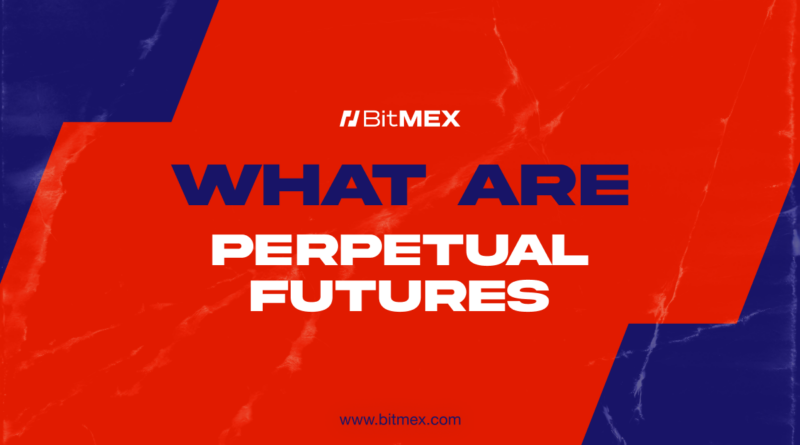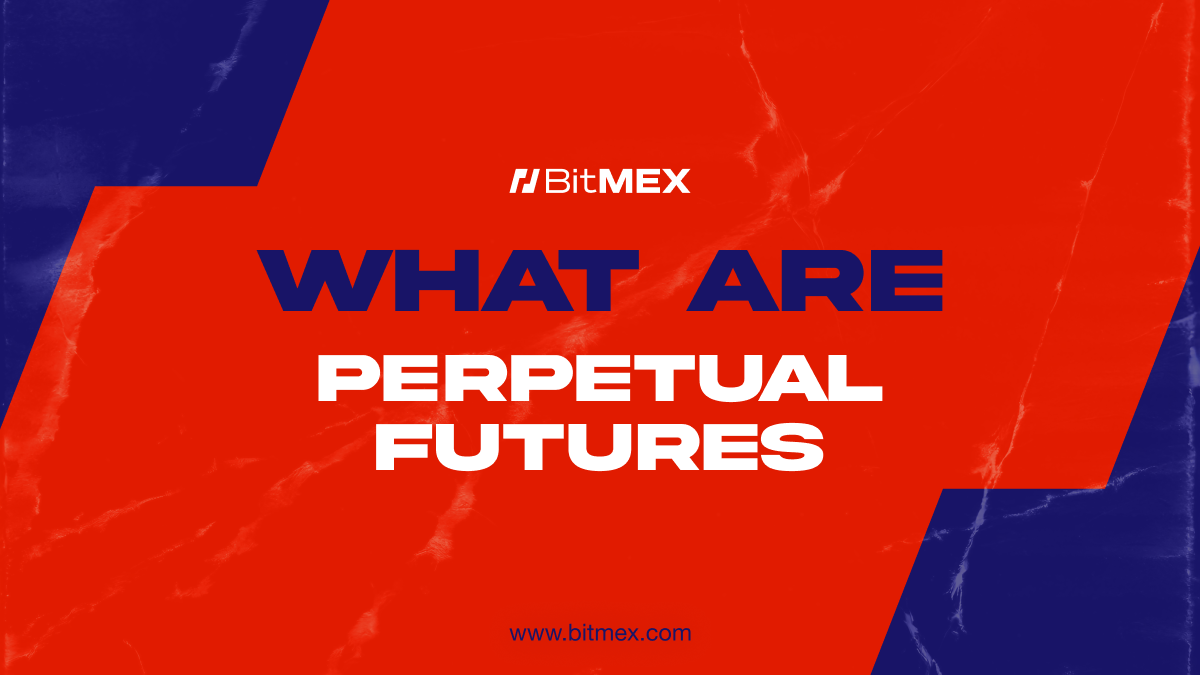Perpetual Futures Explained: How Perpetual Contracts Work
What Are Perpetual Futures
Perpetual Futures contracts are the engine of modern crypto trading, accounting for over 90% of all crypto derivatives trading volume. But trading can feel like a rollercoaster—especially when you factor in leverage, cross-margin, and complex terminologies. It’s easy to get lost in the noise.
Luckily, you’re in the best hands: BitMEX is the pioneer of the Perpetual Futures, the contract that paved the way for modern crypto trading. If you are serious about separating yourself from the amateur traders, your first step is to understand the foundation of crypto trading.
TL;DR Definition of Perpetual Futures
Perpetual futures contracts, commonly referred to as “perps” are a type of derivative agreement that enables traders to speculate on the future price of an underlying asset, without owning the asset itself. This means that perps are always cash-settled; upon the closing of a position, only the resulting profits or losses (PnL) are exchanged, rather than the physical asset.
If you’re coming from traditional finance, this might sound familiar, but perpetual contracts are a little different. Perps do not have a fixed expiration or settlement date, meaning a trader can continuously trade long or short of an asset indefinitely, as long as margin requirements are met.
How Perpetual Futures Work
As Perpetual Futures is a derivative product, it’s value is based on mirroring an underlying asset but is traded separately in it’s own market. Meaning, the spot price and perpetual price of an asset can differ. Spot prices are the value of an asset which can be bought or sold for immediate ownership and delivery.
To ensure that the perpetual price does not deviate a lot from the spot price, a funding rate mechanism is used to close the gap. Funding rates are small periodic payments between traders of each side of the contract (long and short) used to balance the demand.
For example, if the perpetual price is higher than the spot price, we’d need to bring the perpetual price down. A positive funding rate, meaning longs make small periodic payments to shorts, would help incentivise shorts to push the perpetual price back down.
Likewise, when the perpetual price is under the spot price, the funding rates will turn negative. Meaning shorts are now paying the longs. This discourages shorts and incentivises buying pressure, pushing the contract price back up towards spot.
Scenario | Futures Price Relation to Spot | Funding Rate Sign | Payment Flow | Market Incentive |
High Demand for Longs | Futures > Spot (Premium) | Positive (+) | Longs Pay Shorts | Encourages short selling; drives price down |
High Demand for Shorts | Futures < Spot (Discount) | Negative (-) | Shorts Pay Longs | Encourages long buying; drives price up |
Why are traders using perpetual futures instead of spot trading? The beauty of perpetual futures is the ability to offer high leverage to amplify returns as well as directional bets (long or short). However, note that perpetual futures involve a system of continuous Mark-to-Market settlement. This means profits and losses are calculated and applied to the trader’s margin balance in near real-time. This continuous settlement is essential for managing the high risks inherent in leveraged positions.
Key Features of Perpetual Contracts
These are the features that cemented the crypto perpetual contract as the dominant instrument in the 24/7 market:
No Expiration or Settlement Date
Unlike traditional finance, perpetuals have no fixed expiration date ,allowing positions to be held indefinitely provided margin requirements are met. This simplicity eliminates the complex administrative overhead and transaction costs associated with rolling over traditional futures contracts ahead of their mandatory settlement date.
High Leverage
Perpetuals offer higher leverage, which means traders can commit a small amount of capital to control a large position. If a trader opens a 100x leverage $10,000 position, they would only have to commit around $100 in margin. Traders are able to maximise their exposure to amplify gains – but in the same way, it comes with the risk of amplified losses.
24/7 Operation
Matching the non-stop nature of the underlying crypto market, perpetual contracts trade 24/7. This is advantageous compared to traditional markets that operate at a limited time. Traders have the flexibility to access the markets on weekends and holidays.
Perpetuals vs. Traditional Futures
Let’s take a look at the main differences between Perpetual and Traditional futures:
Feature | Perpetual Futures (Perps) | Traditional Futures Contracts |
Contract Expiry | None; held indefinitely | Fixed expiration date (must be settled or rolled over) |
Price Mechanism | Funding Rate dynamically anchors price to spot | Priced based on forward market expectation, converging only at expiry |
Leverage Availability | Generally much higher (often exceeding 10x – up to 250x on BitMEX) | Typically lower, but varies by exchange |
Settlement Method | Continuous, cash-settled (Mark-to-Market) | Physical delivery or financial cash settlement required at expiry |
Trading Hours | 24/7 continuous market access | Fixed daily trading hours (e.g., 9 hours per day) |
Margin, Liquidation & Risk Controls
Perpetual Traders are able to amplify their gains through leverage. However, leverage is a double-edge sword, as losses are amplified as well. To effectively trade perpetuals, traders must understand the associated risks and how to properly manage them.
You must meet the Initial Margin (IM) to open a position. Where does this additional leverage capital come from? Effectively, the exchange lends the user the necessary funds. To protect itself from losses, the exchange employs a liquidation mechanism which closes the user’s position when their margin falls below the Maintenance Margin (MM). It’s best practice to leave some capital as a Margin Buffer increase you’d like to maintain the position.
To ensure profitable traders are always paid in full, many exchanges maintain an insurance fund to cover any losses that exceed a liquidated trader’s margin, especially at times of extreme volatility.
Risks at a Glance
While perpetual trading offers immense power, just like every trading product, there are elevated risks you must manage:
Liquidation Risk
High leverage exponentially increases the risk liquidation. It’s best practice to manage your risk properly such as using a lower capital balance and setting stop-loss to minimise the loss.
Funding Rate Costs
As funding rate payments are made between traders every interval (e.g. every 8 hours), maintaining your position can become costly, especially when the market gets overheated. It’s best practice to use a funding rate tracker to identify overheated periods such as Coinglass.
Market Volatility
Crypto markets are notorious for sudden price changes. Trading can sometimes be a rollercoaster as these surges or drops can quickly exhaust the margin in a highly leveraged account. Exchanges with overleveraged traders or limit liquidity might see larger price swings.
Common Uses: Hedge, Speculate, Arbitrage
Speculation
Traders are able to amplify their gains through leverage in both directions – long and short. Unlike spot trading, perpetuals allow traders to short an asset in anticipation the price goes lower.
Hedging
With the ability to take directional trades, a trade is able to hedge their spot position by opening a short perpetual position. This enables traders to hedge against potential downside volatility and protect their portfolio.
Arbitrage
A core feature of the perpetual futures is its funding rate mechanisms. As funding rates are historically positive (meaning long pays short), traders are able to exploit this through a delta-neutral strategy. By buying the underlying asset and opening a short perpetual position, traders are able to hedge price risk while receiving a periodic funding payment. This method is common amongst hedge funds and arbitrage projects like Ethena.
FAQs
What is the funding rate in perpetual futures?
The funding rate is the central technical innovation of perpetual contracts—a small, periodic payment mechanism transferred directly between long and short position holders. Its core function is to financially incentivise the perpetual futures price to remain closely aligned with the underlying spot price, effectively simulating the price convergence found in traditional futures contracts without requiring a fixed settlement date.
Why do perps have no expiry and how is price kept near spot?
Perpetual contracts were designed to allow traders to hold speculative or hedging positions indefinitely for superior flexibility. The compulsory funding rate is the mechanism responsible for anchoring the crypto perpetual price near the spot price. This periodic payment creates irresistible financial pressure to correct any sustained price deviation (the basis), thereby maintaining market stability and synchrony.
How often is funding charged?
The interval for charging and exchanging the funding rate varies slightly by contract, but the industry standard used by the majority of significant cryptocurrency derivatives exchanges is every eight hours. This results in three funding payments or receipts over a 24-hour cycle.
What’s the difference between spot, index, and the perp price?
- Spot Price: The current, real-time transaction rate for the immediate purchase or sale of the physical asset on a particular venue.
- Perp Price (Last Price): The price of the most recently executed trade on the specific futures exchange. It is the active trading price, but it can be highly volatile.
- Index Price: A crucial reference price, calculated by aggregating and averaging the spot prices of the underlying asset from multiple major, reliable cryptocurrency exchanges. It serves as the stable, non-manipulable baseline for derivative pricing.
- Mark Price: The estimated fair value, calculated using the stable Index Price and used exclusively for calculating PnL and triggering liquidation.
How does liquidation happen on a leveraged perp position?
Liquidation occurs when a trader’s position fails to meet the minimum required Maintenance Margin (MM) due to adverse market price movements. The process is an automated, compulsory function of the trading platform designed to close the position before the trader’s account balance turns negative. The Mark Price—not the volatile Last Price—is the trigger. When the Mark Price hits the predetermined liquidation price, the exchange’s risk engine automatically closes the position at the prevailing market price to cover potential losses.
The post Perpetual Futures Explained: How Perpetual Contracts Work appeared first on BitMEX Blog.
BitMEX Blog





















